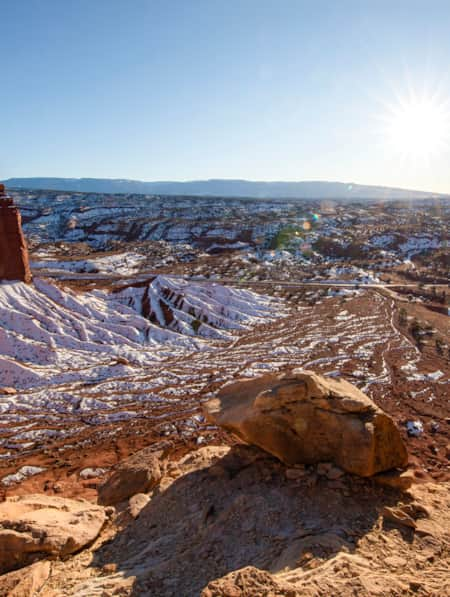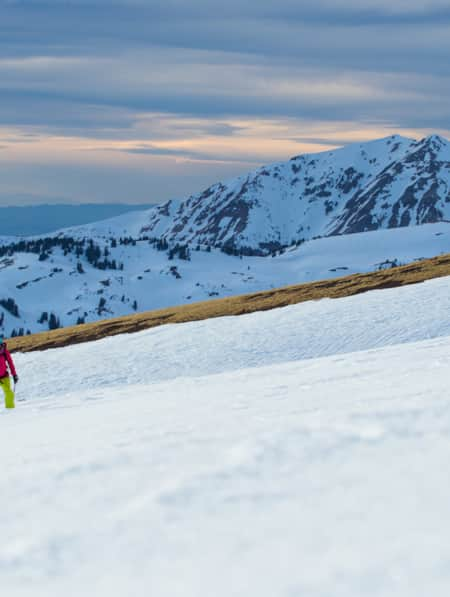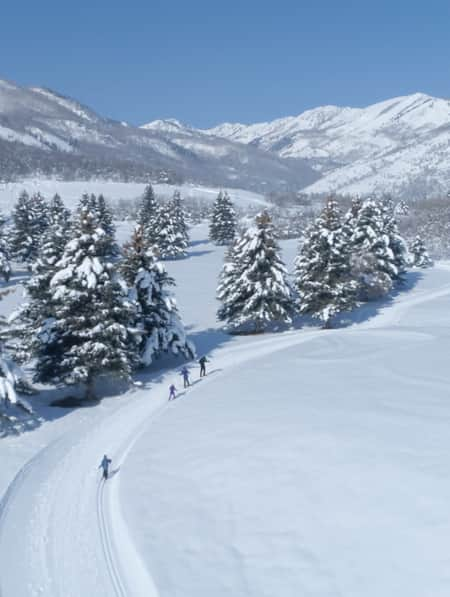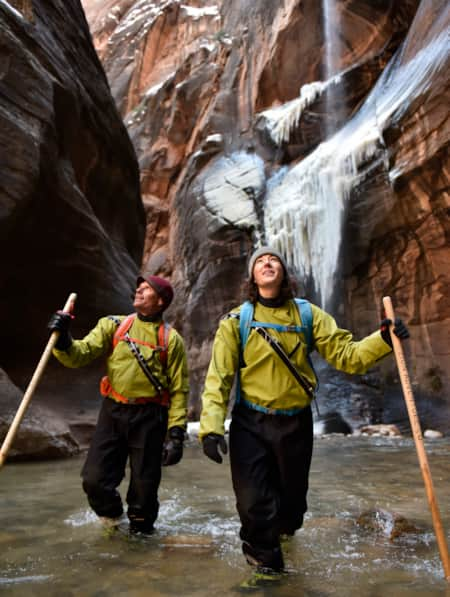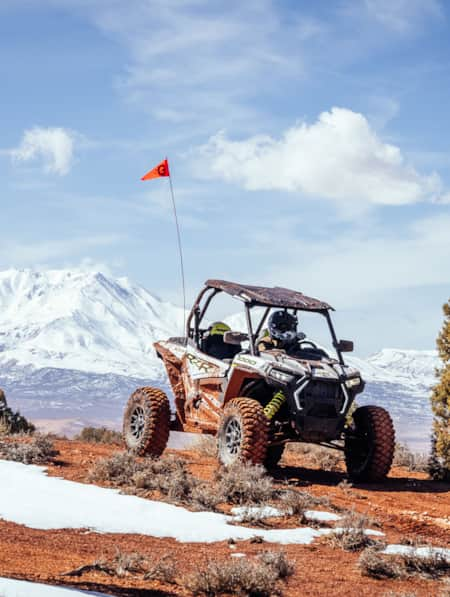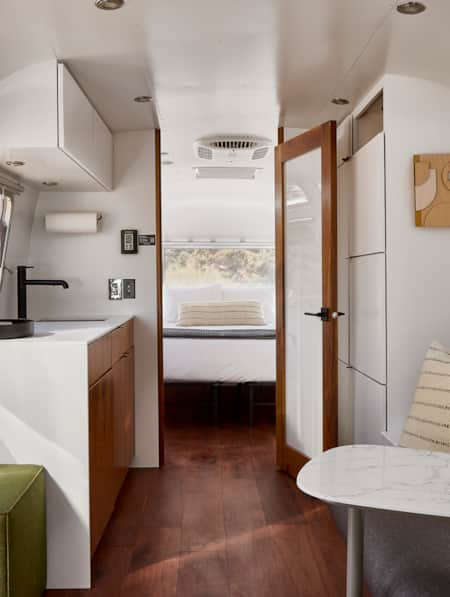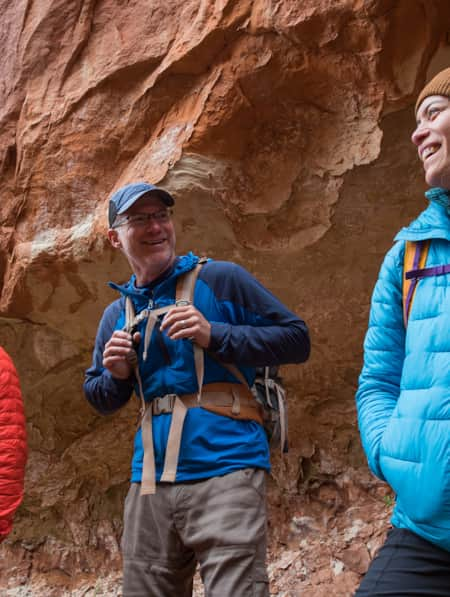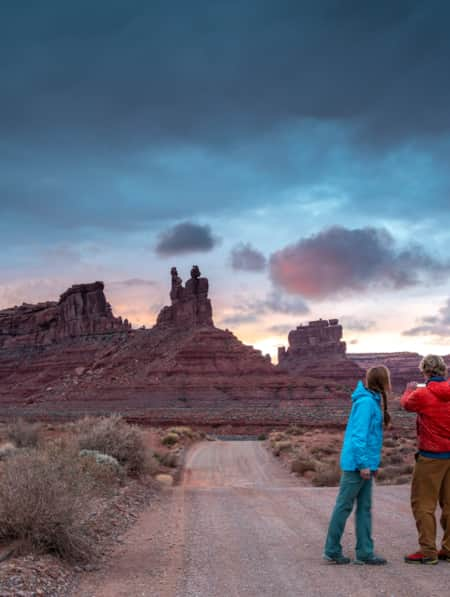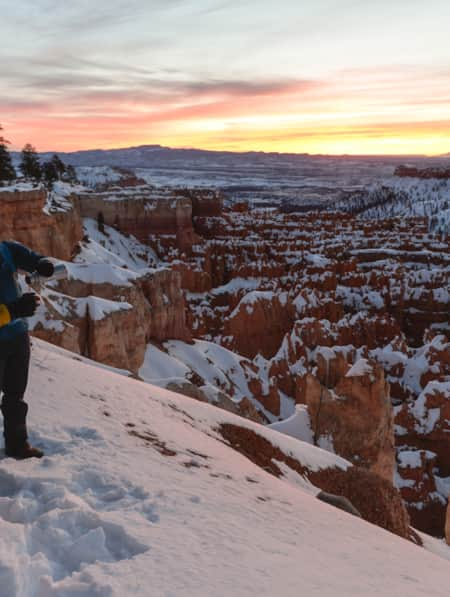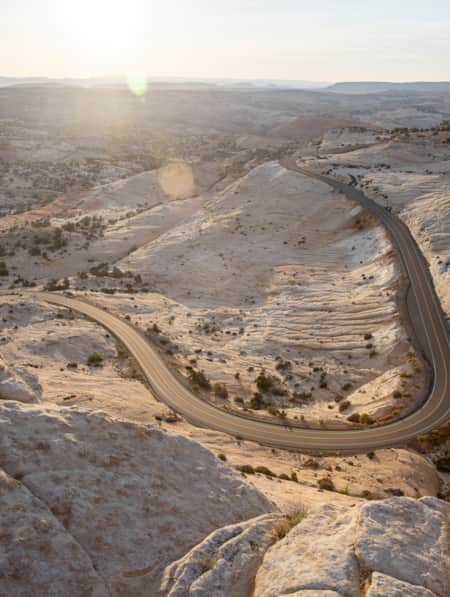Winter Weather in Bryce Canyon
Prepare for cold and snow, and be sure to check current conditions as well as the weather forecast before planning your journey. Normally, winter daytime highs are slightly above freezing, but be prepared for cold snaps. Bryce Canyon’s winter temperatures have plunged as low as -26 degrees Fahrenheit, and subzero temperatures can occur during any winter month. Plan for a snowy visit. The park typically receives just under 100 inches of snow a year, though one year 82 inches of snow fell in January alone. Expect freezing temperatures most nights from October through May, with the possibility of snow. December through February is typically the time of year with the coldest temperatures and most snow, though March and April snowstorms can also be significant.
Average Daily High and Low Temperature
Oct. |
Nov. |
Dec. |
Jan. |
Feb. |
|
58/32 F |
45/23 F 7/-5 C |
36/15 F 2/-9 C |
37/15 F 2/-9 C |
38/17 F 3/-8 C |
Bryce Canyon Winter Activities
-

Bryce Canyon Winter Festival
Every year, the Bryce Canyon Winter Festival provides a fun family weekend with all sorts of activities and events to enjoy. Typically held over President’s Day Weekend, the festival includes everything from ski clinics to snowshoe hikes, geology talks, yoga, art classes, archery clinics, dancing, crafts, pottery, photography workshops and so much more.
-

Cross Country Skiing
Gliding along on cross-country skis is a wonderful way to experience Bryce Canyon. Cross-country skiing is allowed on some park trails including open sections of the Rim Trail, Paria Ski Loop, and Bristlecone Loop Trail, as well as Paria View Road and Fairyland Road (which are unplowed in the winter to allow for cross-country skiing and snowshoeing). Please stick to designated cross-country ski trails and note downhill skiing and snowboarding are not allowed in the park. It is illegal and dangerous to ski or snowboard (or sled) from the canyon’s rim down into the canyon.
-

Snowshoeing & Winter Hikes
Bryce Canyon provides amazing opportunities for winter snowshoeing. Many visitors prefer the relatively flat terrain of Paria View Road, Fairyland Point Road and the Rim Trail open sections. Ranger guided snowshoe hikes are a great way for adults and kids ages 8+ to explore the park while learning about topics like winter ecology and geology. Full-moon snowshoe hikes are also very popular. Contact the park for more details. If the snow is too packed down and icy for a snowshoe, try a winter hike with sturdy boots and “over the shoe” traction devices. Additionally, the park recommends traction devices be used on all paved areas, which can also become very slippery in winter. Contact the park for current conditions.
-

Winter Astronomy
Clear winter nights make for beautiful starry skies. Bundle up in your warmest winter outfit and spend some time gazing up into the cosmos. Bryce Canyon National Park is a certified International Dark Sky Park and sometimes offers winter astronomy programs where rangers help acquaint people with the night sky, weather permitting. When the temperature or wind chill drops below 10 degrees Fahrenheit, they typically cancel the programs.
Winter Camping Near Bryce
Hardy winter campers will enjoy the park’s North Campground, where Loop A is open year-round and sites are first-come, first-served. RVs are allowed, but sewer, water and electrical hookups are not available. The campground is located at approximately 8,000 feet, so be prepared for cold weather and snow.
People looking for a more luxe camping experience may enjoy yurt camping, and nearby towns such as Tropic and Panguitch offer plenty of hotels, motels and other lodging options.
Winter Travel Tips
- Bryce Canyon National Park is open year-round. In winter, the visitor center has reduced hours and is closed on holidays.
- Check the park’s website or call to find out about current conditions and closures. Roads, trails, overlooks and other areas may close due to hazardous conditions, and some are closed all winter.
- Some trails are closed for safety during the winter, and some can be icy enough that mountaineering crampons may be a good option, but consult park rangers for current conditions and recommendations.
- The park’s surfaces (including parking lots, trails, and other areas) can become very icy in the winter, and “over the shoe” traction devices are strongly recommended. Expect snowy and icy trails, and know all areas can be slippery and hazardous.
- Skiing, snowboarding or sledding from the canyon’s rim into the canyon is illegal, very dangerous and can damage the fragile environment. Please follow all park rules and regulations.
- The park encourages visitors to carefully plan their trip and leave a trip plan with an emergency contact.
- Be flexible with your plans. Check the forecast the day of your trip and be prepared to switch to Plan B (which could be staying indoors) depending on conditions.
- Always bring appropriate winter gear, including plenty of warm clothes for layering — along with extras in case your clothes get wet — as well as sunglasses and sunscreen. Be sure to properly prepare for a winter visit.
- Make sure you and your car are prepared for winter driving, with chains or snow tires, and a full winter emergency kit.

